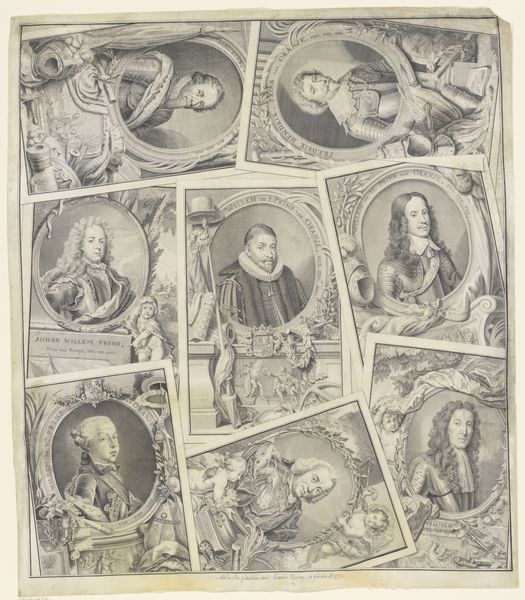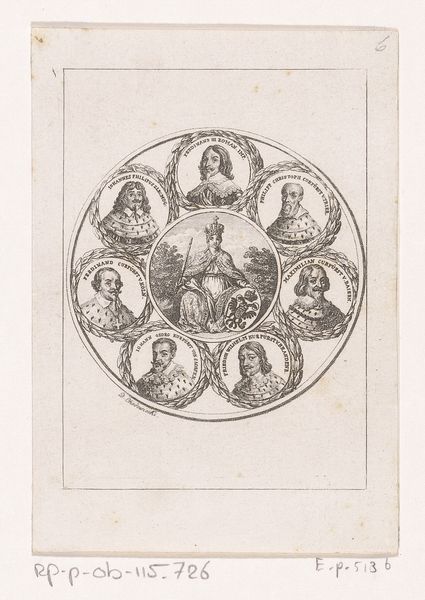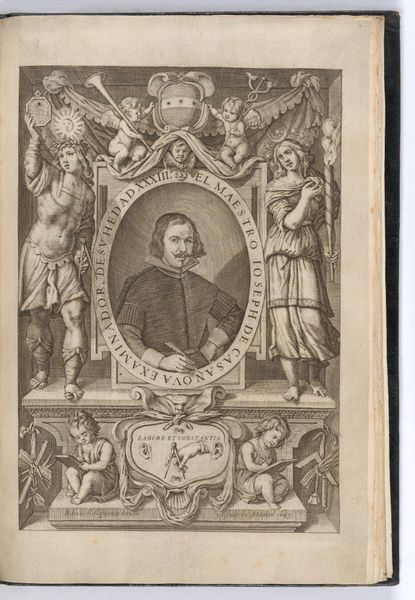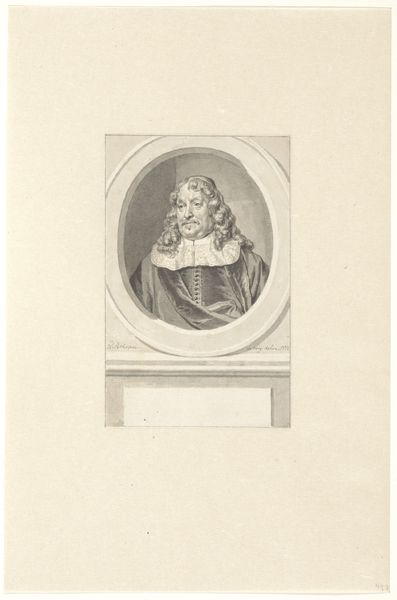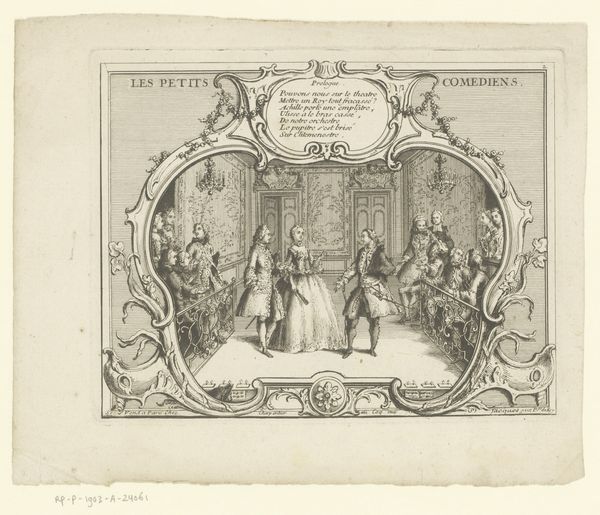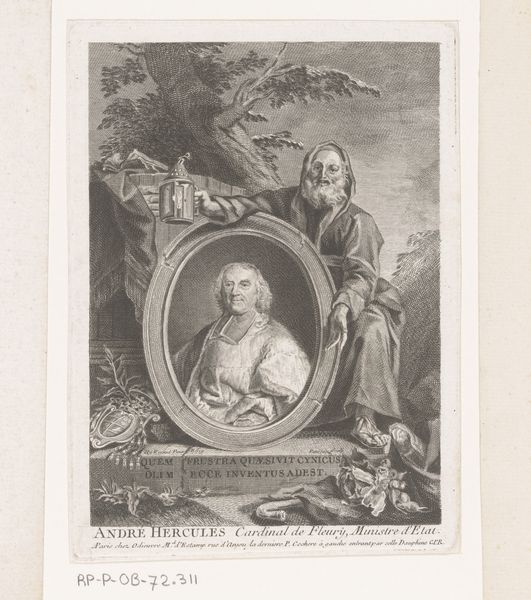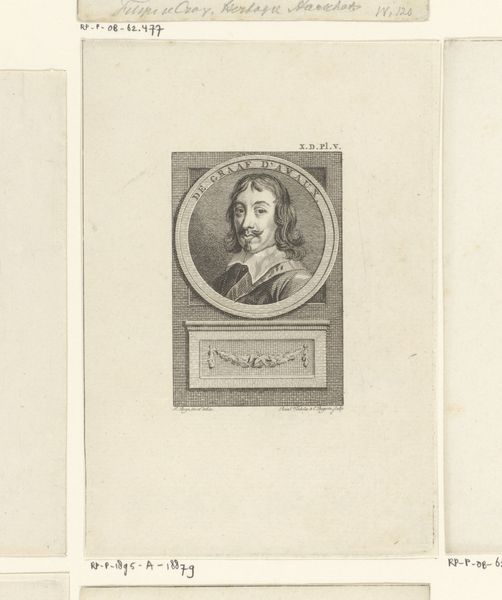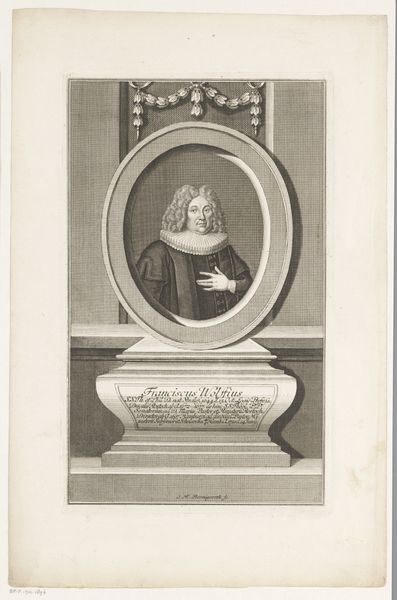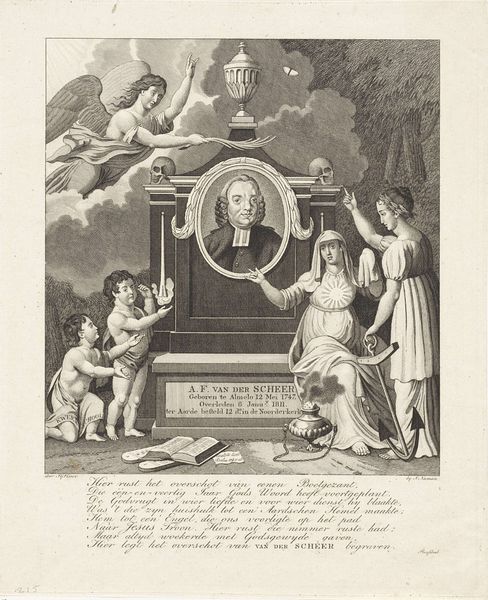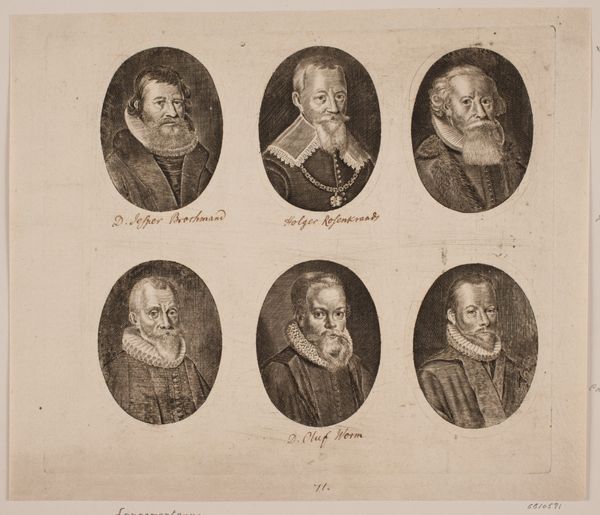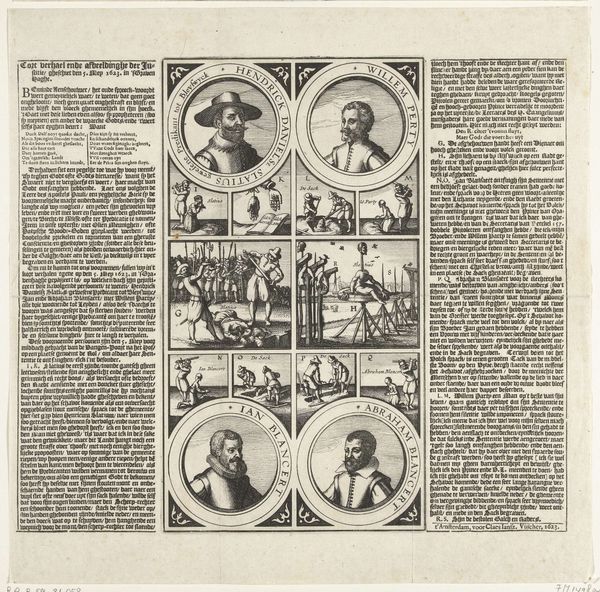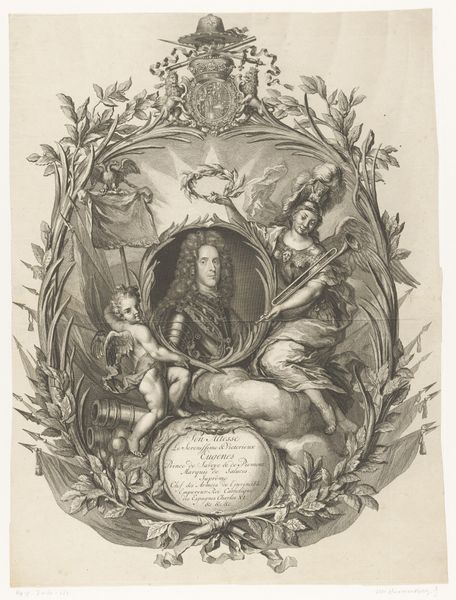
drawing, pencil
#
portrait
#
drawing
#
11_renaissance
#
group-portraits
#
pencil
#
history-painting
#
realism
Dimensions: height 245 mm, width 177 mm
Copyright: Rijks Museum: Open Domain
Curator: Welcome. Let's turn our attention to a drawing here at the Rijksmuseum entitled "Portraits of Constantijn Huygens and his five children." It was rendered sometime between 1817 and 1818. Editor: The arrangement of figures inside these ornamented ovals gives a first impression of a rather stern family crest. Though skillfully drawn in pencil, its monotone palette strikes me as a very somber affair. Curator: The technical skill on display is noteworthy. Look at the intricate detail achieved with simple pencil strokes. This wasn't just about depicting likeness; it speaks to the emerging commercial availability of refined drawing implements during that period. How did access to better pencils affect the professional and amateur artistic practice? How did the availability affect who could commission a portrait? Editor: Right, and focusing on the symbolic framework, notice how Constantijn Huygens, the father, is positioned centrally, acting as the linchpin holding this family unit together, quite literally visually. The oval frames around each figure are also interesting: they give the impression of gemstones, as if to associate this group with something priceless. Curator: Precisely, these material choices affect perception. Pencil, paper, the very reproducibility of a drawing—these elements challenge the grand tradition of painted portraiture. Also, what does it suggest that this piece, even as a historical recreation from the 19th century, mimics some elements of earlier production? Consider too how the industrial processing needed to manufacture these tools affects who can produce works such as this one. Editor: Yes! And the text below adds another layer. "Ecce haereditas Domini. Anno 1647," It directly translates to "Behold the inheritance of the Lord," a biblical reference, taken from Psalms 127:3, connecting progeny and generational continuity. Each child in turn is framed and almost revered within the overarching circular tableau. It is both portrait and emblem. Curator: Fascinating when you approach it from that angle. For me, this is about more than that biblical quotation. The drawing’s existence reflects a shift toward new means of pictorial expression, a symptom of industrialized supply chains beginning to impact modes of making. Editor: It’s an interesting exchange of form and matter, one can see. Curator: Exactly, each layer unveiling a complex web.
Comments
No comments
Be the first to comment and join the conversation on the ultimate creative platform.

